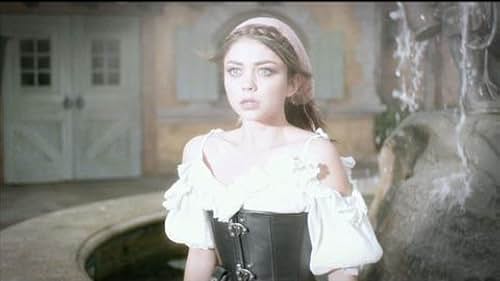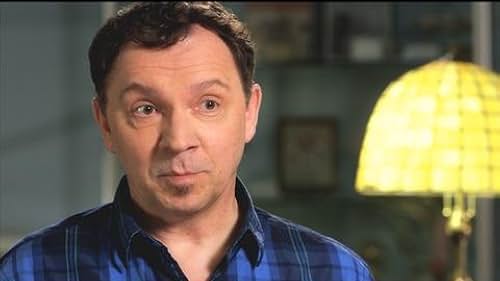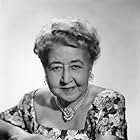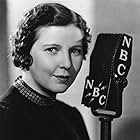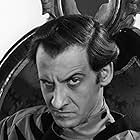After being snubbed by the royal family, a malevolent fairy places a curse on a princess which only a prince can break, along with the help of three good fairies.After being snubbed by the royal family, a malevolent fairy places a curse on a princess which only a prince can break, along with the help of three good fairies.After being snubbed by the royal family, a malevolent fairy places a curse on a princess which only a prince can break, along with the help of three good fairies.
- Nominated for 1 Oscar
- 3 wins & 5 nominations total
Mary Costa
- Princess Aurora
- (voice)
Bill Shirley
- Prince Phillip
- (voice)
Eleanor Audley
- Maleficent
- (voice)
Verna Felton
- Flora
- (voice)
- …
Barbara Luddy
- Merryweather
- (voice)
Barbara Jo Allen
- Fauna
- (voice)
Taylor Holmes
- King Stefan
- (voice)
Bill Thompson
- King Hubert
- (voice)
Bob Amsberry
- Maleficent's Goon
- (voice)
- (uncredited)
Billy Bletcher
- Maleficent's Goon
- (uncredited)
Candy Candido
- Maleficent's Goon
- (voice)
- (uncredited)
Pinto Colvig
- Maleficent's Goon
- (voice)
- (uncredited)
Hans Conried
- Lord Duke
- (uncredited)
Dal McKennon
- Owl
- (voice)
- (uncredited)
- …
Marvin Miller
- Narrator
- (voice)
- (uncredited)
Clarence Nash
- Horse
- (uncredited)
Purv Pullen
- Bluebird
- (uncredited)
- …
Storyline
Did you know
- TriviaThe running gag of Flora and Merryweather arguing about whether Aurora's dress should be pink or blue originated from the filmmakers' problem as to deciding just that.
- GoofsKing Hubert and Prince Phillip both remark at certain points in the movie that it's the 14th century. In another scene, we see fireworks being set off. Fireworks were not used for entertainment until the 16th century.
- Quotes
Merryweather: [after Flora makes the first version of Aurora's dress] It looks awful.
Flora: That's because it's on you, dear.
- Crazy creditsThe opening credits say Technirama, but not Super Technirama 70, which is the process it was filmed in.
- Alternate versionsAt one point, the Swedish version was slightly edited to remove Prince Phillip hitting the Dragon's snout with his sword, as it was deemed too violent for Swedish children and also not motivated enough. It was eventually restored.
- ConnectionsEdited into The Magical World of Disney: Music for Everybody (1966)
- SoundtracksHail to the Princess Aurora
(1958) (uncredited)
Music by George Bruns
Lyrics by Tom Adair
Performed by Chorus
Featured review
"Sleeping Beauty" was envisioned by the great Walt Disney as his masterpiece--the feature-length cartoon par excellence. And, in many ways, it is. The then-record budget (six million dollars) was the largest ever for an animated motion picture. The widescreen Technirama 70 process had never been used for an animated feature. The six-track magnetic stereo sound was a step upward from the "Fantasound" system employed in "Fantasia" (1940). Also new and trend-setting was the style of the animation--a more realistic, geometric design which, surprisingly left many critics and audiences cold. The extra expense needed to showcase the widescreen film properly, together with the lukewarm reviews, prevented "Sleeping Beauty" from turning a profit at the box office when it was released (with much fanfare) in 1959. But time has been kind to the film, subsequent reissues have finally put it in the profit margin, and both viewers and critics are appreciating it for the beautiful fantasy it has always been. However, like it's predecessor "Snow White and the Seven Dwarfs" (1937) which was Disney's first fairy tale, as well as his first full-length film, this screen adaptation of "Sleeping Beauty" strays from it's origins. While the Charles Perrault version of the tale is given as the source, there are new variations.
The original story is as follows: When a baby girl is born to a King and Queen, they invite seven (or, in the Grimm version, twelve) Fairies to the christening. Uninvited is an evil fairy, who shows up anyway, and curses the child with death on her 16th birthday. Although a good fairy is able to alter the spell, the princess is doomed to sleep (along with the court) for 100 years. Despite the precautions taken, the curse is fulfilled (accidentally, in most versions of the story) and the princess does indeed sleep for a century, after which a prince awakens her. Understandably, Disney's telling departs from Perrault here as well, because in Perrault's version, the King and Queen are the sole members of the court who do not succumb to the sleeping spell, and, eventually die of old age. The Disney version of the tale whittles the number of good fairies down to three, giving them the appearance and personalities of elderly women. Meanwhile, the evil fairy, dubbed Maleficent, is a cold, flamboyant villainess who, for better or worse, overshadows everyone else in the film (but then, the villain always does). Disney's retelling also dispenses with the Heroine's 100 year sleep which lasts merely one night. There is much emphasis put on the three fairies who secretly, in the guise of peasants, raise the baby princess Aurora, (whom they dub "Briar Rose" interestingly, the name given the Princess in the Grimm retelling) and, unwittingly make it possible for Maleficent to execute her curse. Also new, is the introduction at the beginning of the film of Prince Phillip, who is immediately betrothed to Aurora. The climatic battle he has with the evil fairy, here transformed into a dragon, has become one of the most memorable parts of the film, though it was purely the scriptwriter's invention. In the end, however, it is best to appreciate the film as a stand-alone creation, rather than a faithful adaptation of a classic story.
Indeed, as some latter-day critics have pointed out, "Sleeping Beauty" has been embraced by the young and old audiences who find in it many of the same sword and sorcery elements in films like "Legend" and "Excalibur". And every penny of it's then-unprecedented budget is on the screen. One marvels at the intricate design of the animation, all accomplished well before the advent of computers, which the Technirama screen showcases to full effect. The voice talent is perfect. Mary Costa, who went on to an estimable opera career, is a lovely and expressive Aurora, while Bill Shirley is an ingratiating Prince Phillip. Eleanor Audley (so deliciously cold as the stepmother in Disney's "Cinderella") is the embodiment of majestic evil as Maleficent. Verna Felton (the Fairy Godmother in Disney's "Cinderella"), Barbara Jo Allen and Barbara Luddy are the delightful (and all too human) fairies, Flora, Fauna and Merryweather. Aurora's father, King Stefan, is voiced by Taylor Holmes, with Bill Thompson as Phillip's father King Hubert. A word should also be said for Candy Candido, who provided the sounds made by Maleficent's goons. The Tchaykovsky ballet score provides both the background music and melodies used for the new songs. All this blends perfectly in an epic adventure/fantasy seldom experienced on screen, and one with enough heart to capture the most cynical viewer.
The Special Edition DVD, released in 2003, and currently out of print, is another example of what a "Special Edition" truly encompasses, including a fully restored widescreen print of the film, a new 5.1 stereo mix which fully showcases the Academy Award nominated score, as well as many bonus features with appeal to all ages (including a widescreen/fullscreen comparison which should be the last word on that subject). Also included are several complimentary historical shorts like the Academy Award winning "Grand Canyon" which accompanied "Sleeping Beauty" on it's initial release. Trailers, games, interviews with Mary Costa and surviving animators, vintage featurettes which delve into the making of the film, and last, but not least, footage of Disney himself, complete the dazzling package. Finally awakened from her long slumber, and more refreshingly lovely than ever, "Sleeping Beauty" is a film (and DVD) for the ages.
The original story is as follows: When a baby girl is born to a King and Queen, they invite seven (or, in the Grimm version, twelve) Fairies to the christening. Uninvited is an evil fairy, who shows up anyway, and curses the child with death on her 16th birthday. Although a good fairy is able to alter the spell, the princess is doomed to sleep (along with the court) for 100 years. Despite the precautions taken, the curse is fulfilled (accidentally, in most versions of the story) and the princess does indeed sleep for a century, after which a prince awakens her. Understandably, Disney's telling departs from Perrault here as well, because in Perrault's version, the King and Queen are the sole members of the court who do not succumb to the sleeping spell, and, eventually die of old age. The Disney version of the tale whittles the number of good fairies down to three, giving them the appearance and personalities of elderly women. Meanwhile, the evil fairy, dubbed Maleficent, is a cold, flamboyant villainess who, for better or worse, overshadows everyone else in the film (but then, the villain always does). Disney's retelling also dispenses with the Heroine's 100 year sleep which lasts merely one night. There is much emphasis put on the three fairies who secretly, in the guise of peasants, raise the baby princess Aurora, (whom they dub "Briar Rose" interestingly, the name given the Princess in the Grimm retelling) and, unwittingly make it possible for Maleficent to execute her curse. Also new, is the introduction at the beginning of the film of Prince Phillip, who is immediately betrothed to Aurora. The climatic battle he has with the evil fairy, here transformed into a dragon, has become one of the most memorable parts of the film, though it was purely the scriptwriter's invention. In the end, however, it is best to appreciate the film as a stand-alone creation, rather than a faithful adaptation of a classic story.
Indeed, as some latter-day critics have pointed out, "Sleeping Beauty" has been embraced by the young and old audiences who find in it many of the same sword and sorcery elements in films like "Legend" and "Excalibur". And every penny of it's then-unprecedented budget is on the screen. One marvels at the intricate design of the animation, all accomplished well before the advent of computers, which the Technirama screen showcases to full effect. The voice talent is perfect. Mary Costa, who went on to an estimable opera career, is a lovely and expressive Aurora, while Bill Shirley is an ingratiating Prince Phillip. Eleanor Audley (so deliciously cold as the stepmother in Disney's "Cinderella") is the embodiment of majestic evil as Maleficent. Verna Felton (the Fairy Godmother in Disney's "Cinderella"), Barbara Jo Allen and Barbara Luddy are the delightful (and all too human) fairies, Flora, Fauna and Merryweather. Aurora's father, King Stefan, is voiced by Taylor Holmes, with Bill Thompson as Phillip's father King Hubert. A word should also be said for Candy Candido, who provided the sounds made by Maleficent's goons. The Tchaykovsky ballet score provides both the background music and melodies used for the new songs. All this blends perfectly in an epic adventure/fantasy seldom experienced on screen, and one with enough heart to capture the most cynical viewer.
The Special Edition DVD, released in 2003, and currently out of print, is another example of what a "Special Edition" truly encompasses, including a fully restored widescreen print of the film, a new 5.1 stereo mix which fully showcases the Academy Award nominated score, as well as many bonus features with appeal to all ages (including a widescreen/fullscreen comparison which should be the last word on that subject). Also included are several complimentary historical shorts like the Academy Award winning "Grand Canyon" which accompanied "Sleeping Beauty" on it's initial release. Trailers, games, interviews with Mary Costa and surviving animators, vintage featurettes which delve into the making of the film, and last, but not least, footage of Disney himself, complete the dazzling package. Finally awakened from her long slumber, and more refreshingly lovely than ever, "Sleeping Beauty" is a film (and DVD) for the ages.
- phillindholm
- Jul 8, 2006
- Permalink
- How long is Sleeping Beauty?Powered by Alexa
Details
- Release date
- Country of origin
- Official site
- Language
- Also known as
- Uspavana lepotica (Trnjulčica)
- Filming locations
- Production companies
- See more company credits at IMDbPro
Box office
- Budget
- $6,000,000 (estimated)
- Gross US & Canada
- $51,600,000
- Gross worldwide
- $51,600,485
- Runtime1 hour 15 minutes
- Color
- Aspect ratio
- 2.55 : 1(original & negative ratio)
Contribute to this page
Suggest an edit or add missing content



